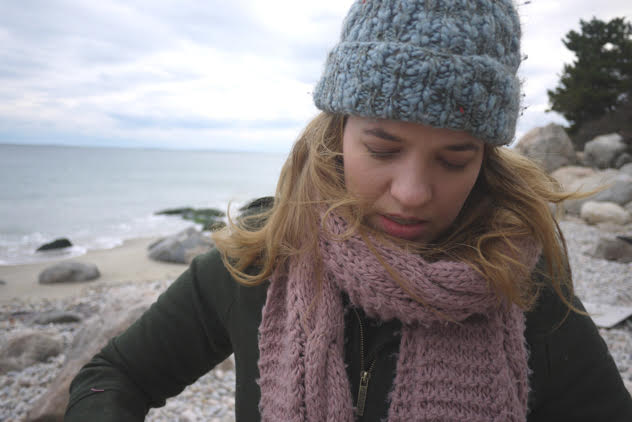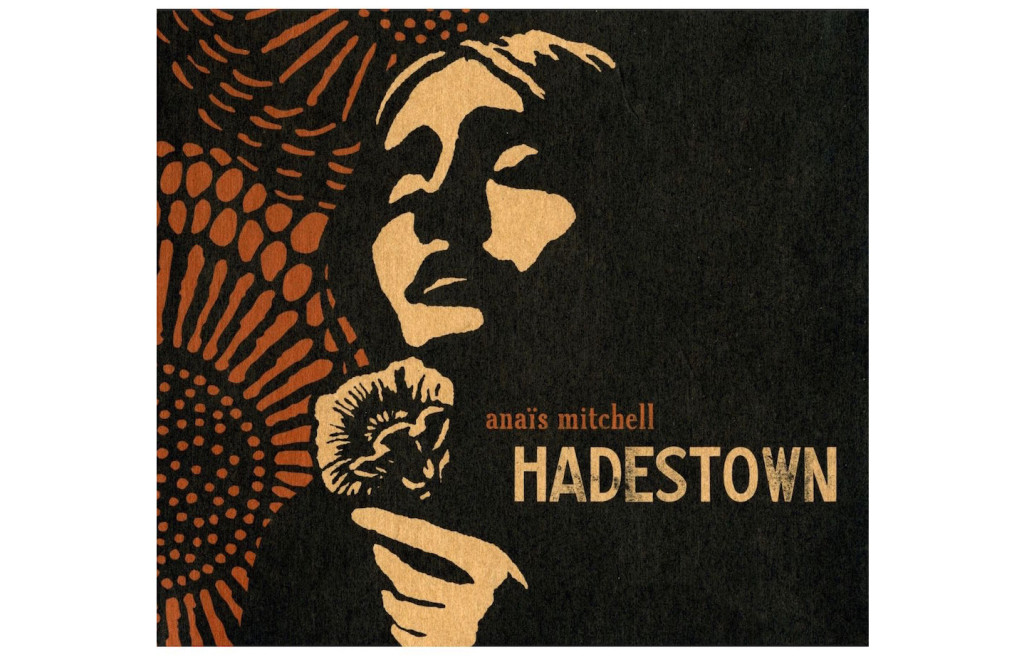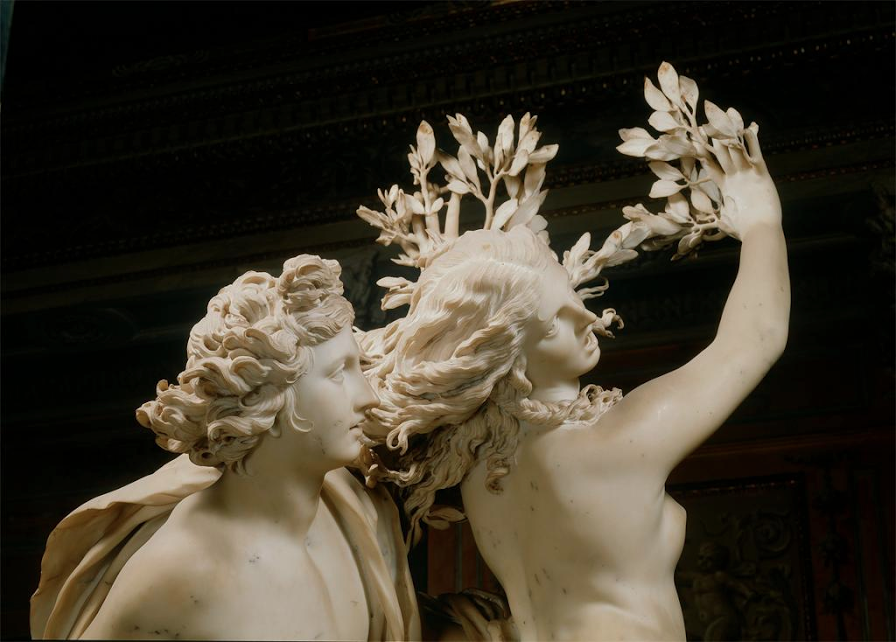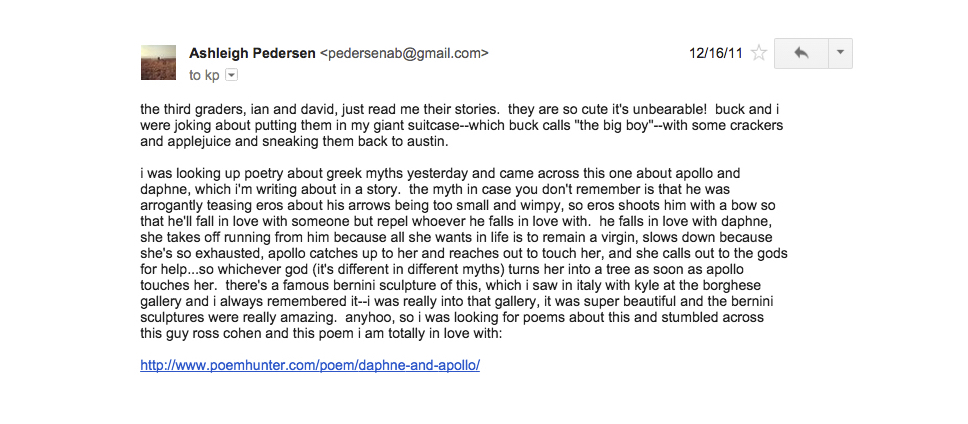\
THE MATERIAL
Ashleigh Bell Pedersen
-
 The author on Fishers Island.
The author on Fishers Island.The story “Daphne, in the Green Dappled Light” came about because of two primary influences: 1) Anais Mitchell’s 2010 concept album Hadestown, in which she transforms the story of Orpheus and Eurydice into a folk narrative set in a futuristic depression-era town, and 2) a statue of Apollo and Daphne I saw in the Borghese Gallery in Rome when I was eighteen.
When I wrote the first draft of this story—in the middle of winter at a residency program called the Lighthouse Works, on Fishers Island, New York, a full ten years after the trip to the Borghese Gallery—I was obsessed, and I do mean obsessed, with the singer Anais Mitchell.
-

Aside from my sometimes over-the-top appreciation for the artist herself, I still find Hadestown to be a moving, spectacularly creative form of storytelling. I love the strange time and space that Mitchell establishes through her lyrics, through melodic allusions to the Great Depression. I love the romance of the Greek myth itself—even the names, Orpheus and Eurydice, sound poetic. Mitchell’s album, along with Jonathan Goldstein’s short story, “Adam and Eve,” and Leonard Cohen's "Hallelujah," occupy a specific psychological space that does not quite feel like my own—as though in telling or reading or listening to these stories I am, for a passing moment, standing in the same room as others who have done the same thing.
-

Then there is Bernini’s statue, a towering marble beauty, depicting the moment when Daphne begins to transforms into a laurel tree. Taking in this statue is probably as close to experiencing a physical manifestation of the collective unconscious as I can imagine: you are quite literally in a room through which millions of people have passed. Both Apollo and Daphne look surprised, although Apollo’s expression is strangely muted—you could even argue he looks resigned. Daphne’s expression seems in part one of terror, but whether in response to Apollo or to the fact that her body parts are turning into tree branches is up for interpretation.
-

My visit to the Borghese Gallery was at the tail end of a three-week-long trip to Rome the summer after I graduated from high school. My best friend’s father took us, probably hoping to nudge us out of our insular teenage cave of Dawson’s Creek reruns and the Beastie Boys, but we had spent the majority of our vacation getting fat on lunch time panini and wine, and playing round after round of gin rummy in our apartment bedroom. The Borghese Gallery was somehow different, and the statue of Apollo and Daphne was especially haunting. Reflecting on it now, perhaps it was Daphne herself, wildly fleeing from what she knew she didn’t want, running toward the unknown. Perhaps hers was a scene with which I was already familiar, was in fact currently experiencing, in that post-high school, pre-college moment.
-

Roughly ten years later, sitting up under the eaves of my little attic writing room (it was cold, romantic, and overlooked the sound) at the Lighthouse Works, that statue came back to me—those facial expressions, the curves in the marble—and I decided to explore that moment and the characters behind it. Getting to know Daphne in particular was a deeply joyful part of writing this story, though also the most challenging. Eros, on the other hand, was already in existence long before I sat down at my laptop to write about him. Apollo, I suppose I pitied—but I also related to his relentless longing.



